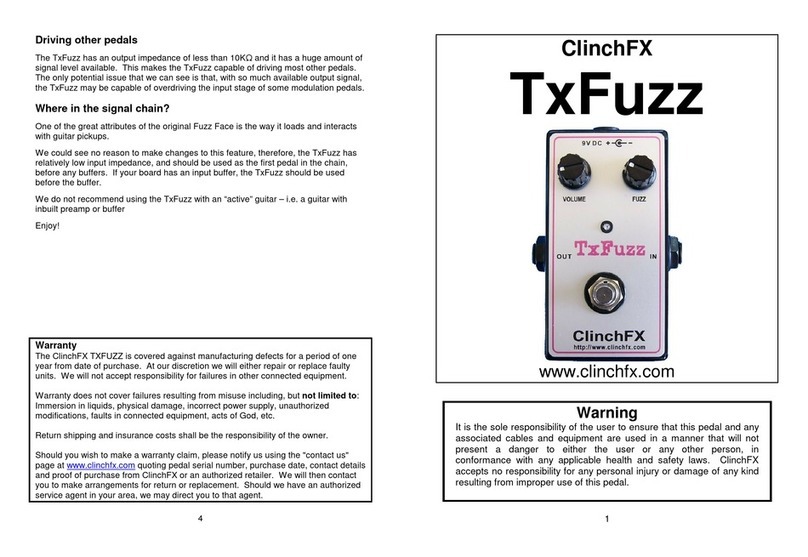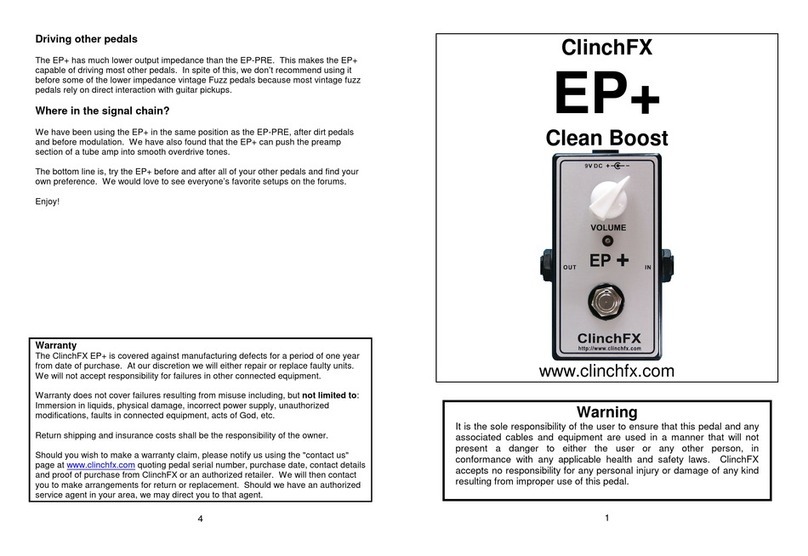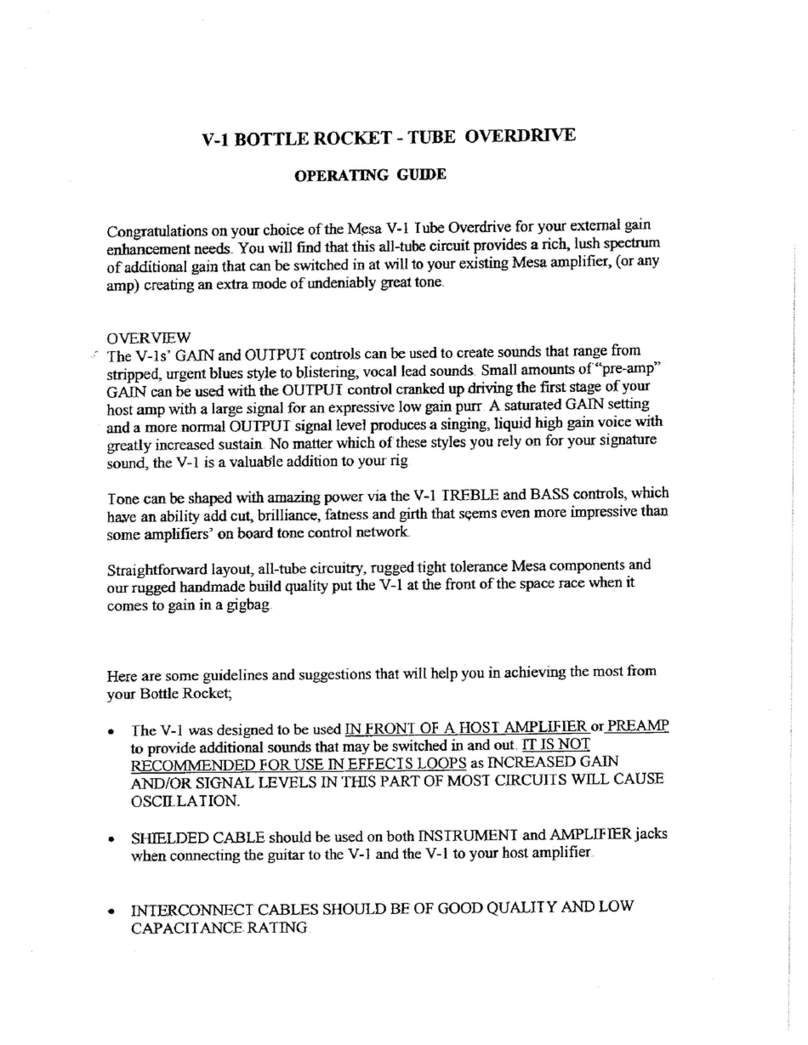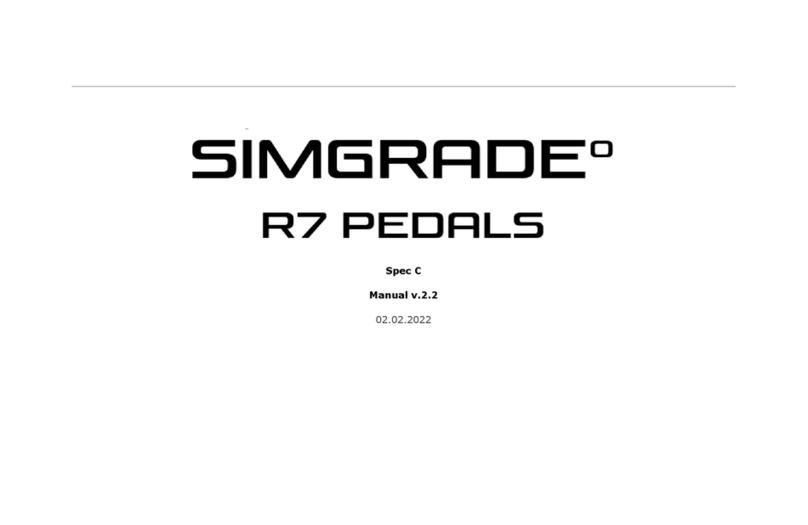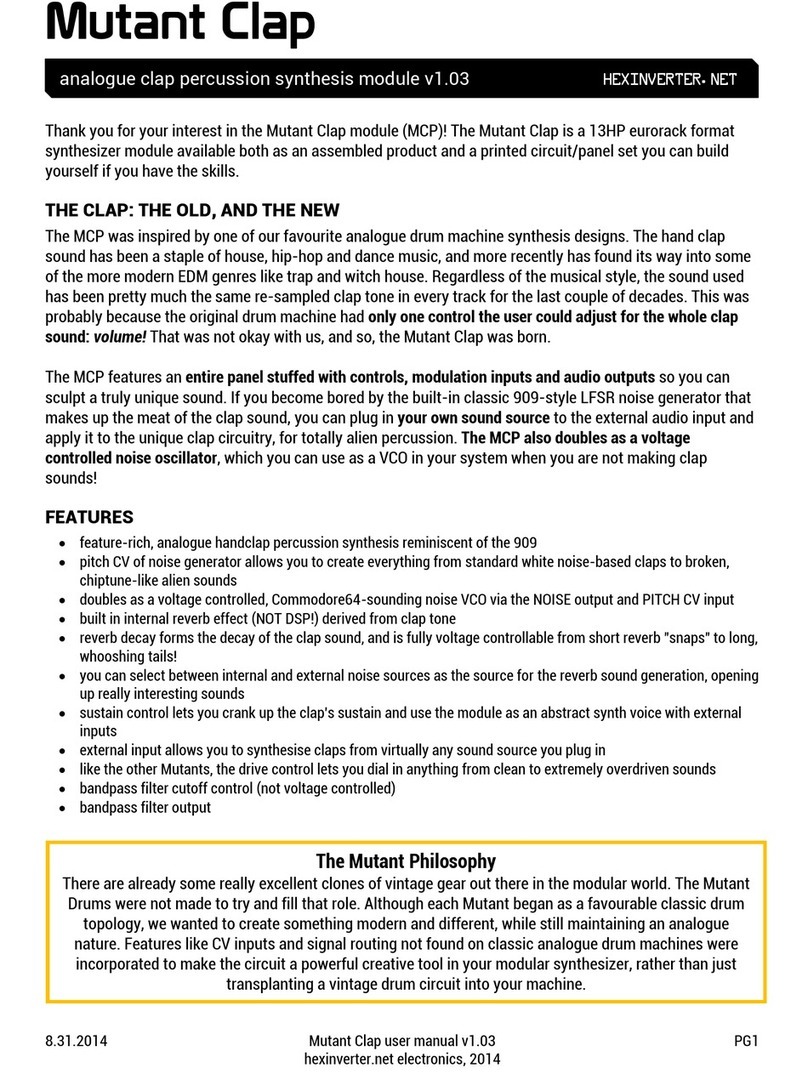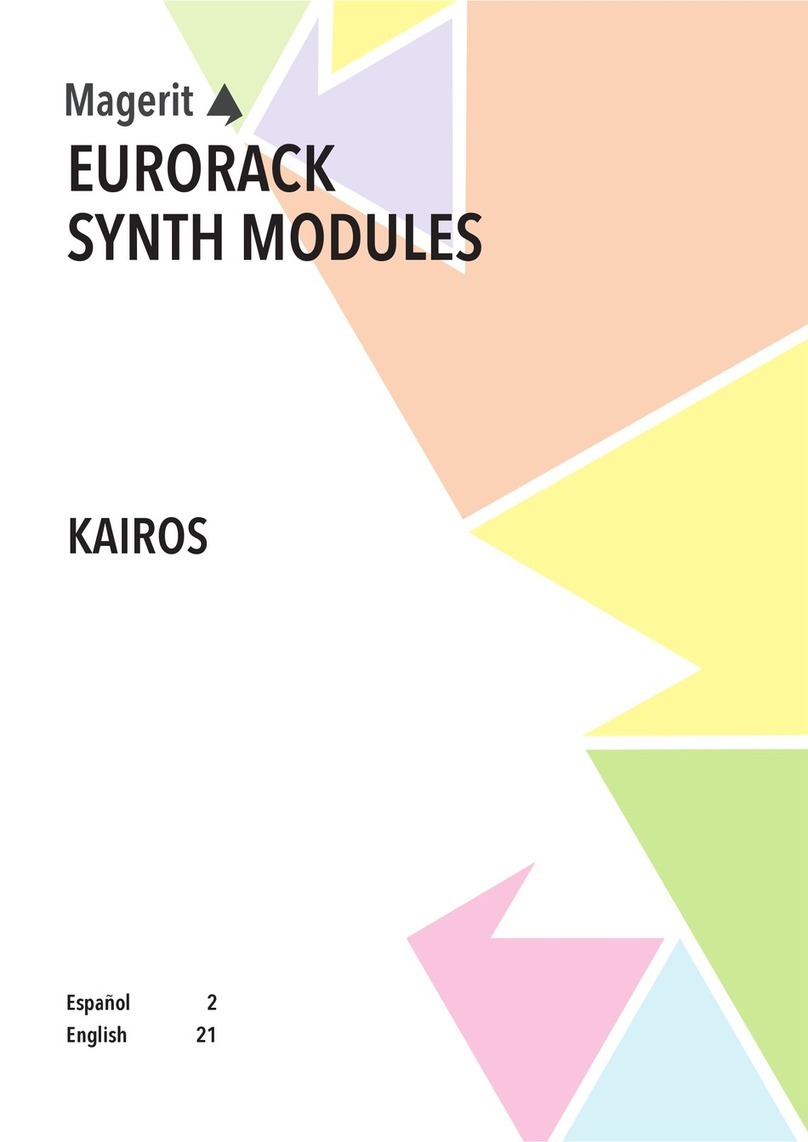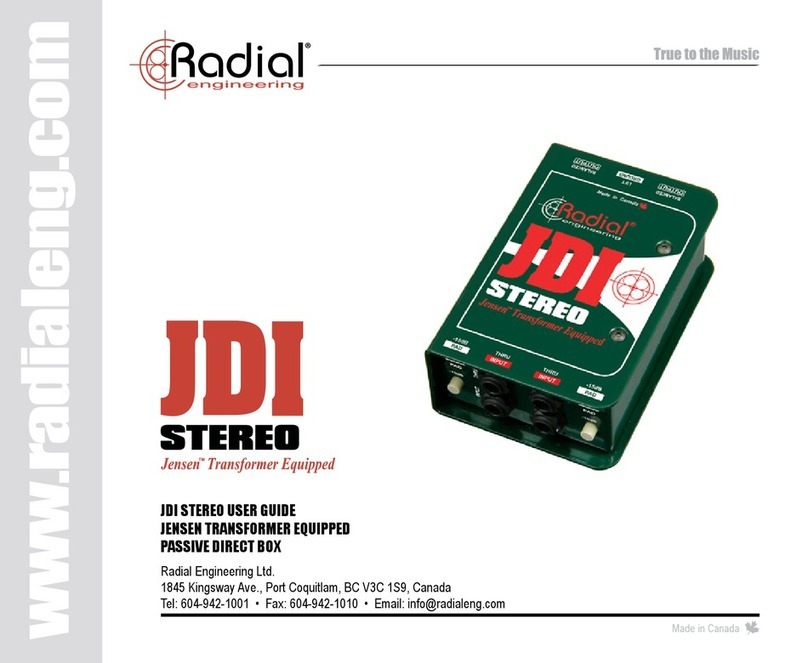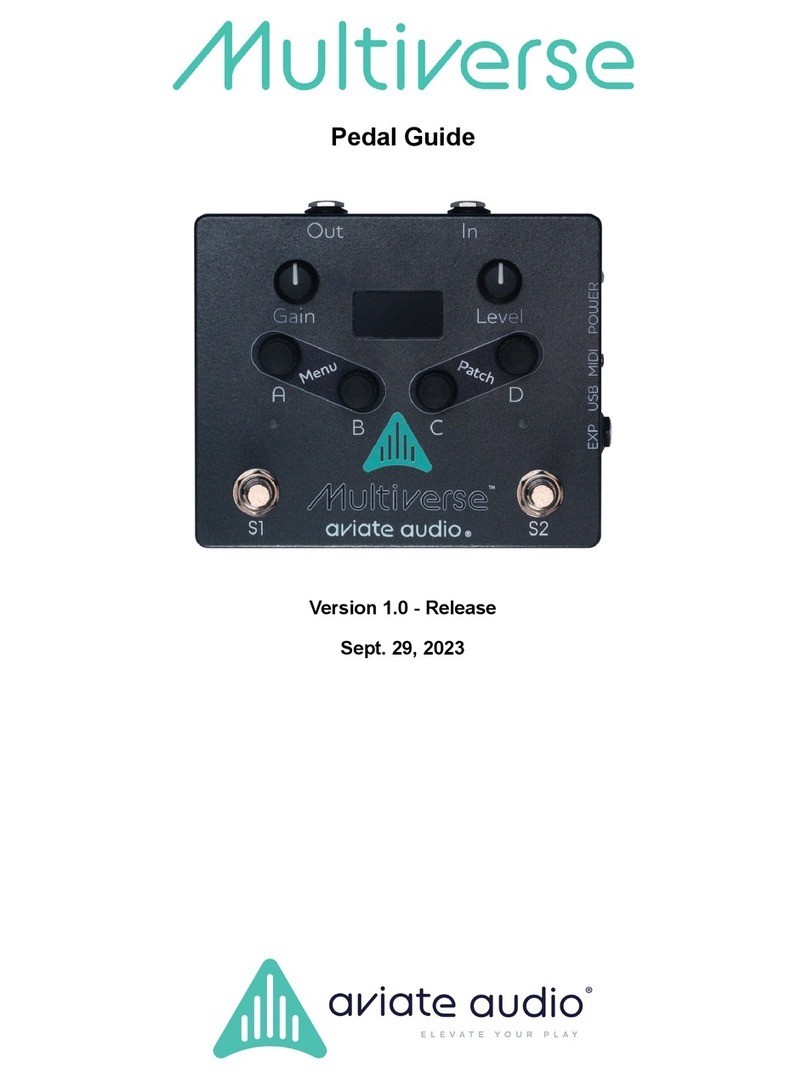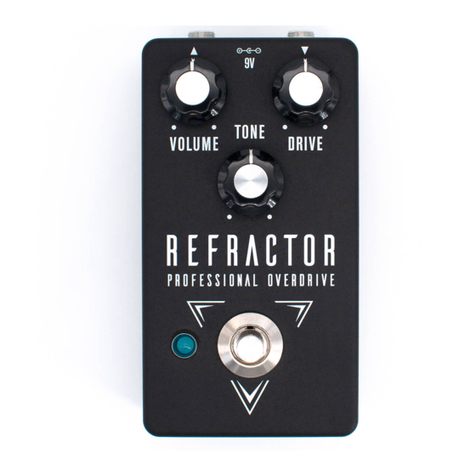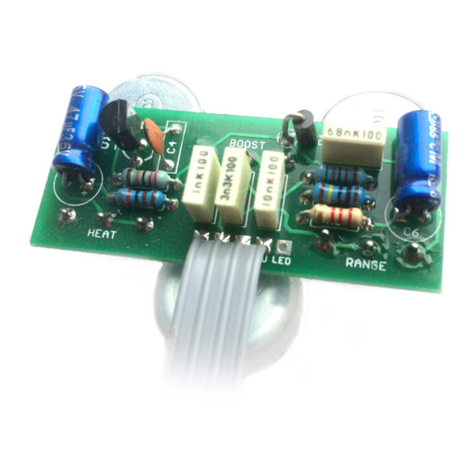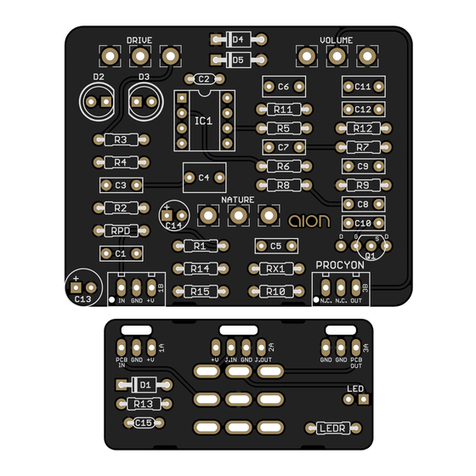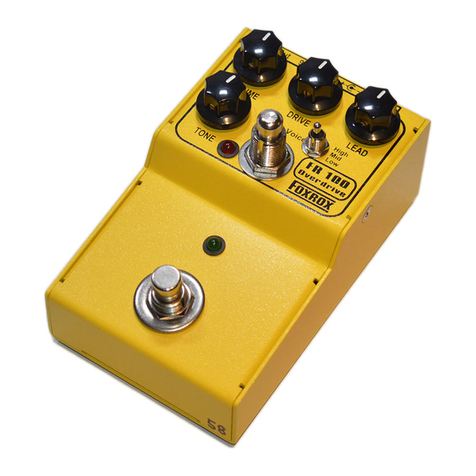ClinchFX EP-PRE User manual

Driving other pedals
In keeping with the design of the original tape echo unit, the output impedance is high.
If it was low, it wouldn’t have the characteristic tone. The down side of this is that the
EP-PRE doesn’t do a very good job of driving low impedance pedals such as the Fuzz
Face.
Where in the signal chain?
The EP-PRE should not be used before a low input impedance pedal such as vintage
fuzzes or one of the many clones. If you place the EP-PRE at the end of the chain,
the final tone will be affected by the guitar cable that runs from the EP-PRE to the
amp. A cable that has high capacitance will cause a similar top end roll off to the
effect you get when you use a high capacitance cable with a guitar.
Most EP-PRE owners have found that the pedal works best when used after “dirt”
pedals but before modulation effects such as delay, echo, tremolo and phaser. The
final tone will change, depending on where the pedal is in the chain, but it nearly
always sounds good.
The bottom line is, try the EP-PRE before and after all of your other pedals and find
your own preference.
Enjoy!
Warranty
The ClinchFX EP-PRE is covered against manufacturing defects for a period of one
year from date of purchase. At our discretion we will either repair or replace faulty
units. We will not accept responsibility for failures in other connected equipment.
Warranty does not cover failures resulting from misuse including, but not limited to:
Immersion in liquids, physical damage, incorrect power supply, unauthorized
modifications, faults in connected equipment, acts of God, etc.
Return shipping and insurance costs shall be the responsibility of the owner.
Should you wish to make a warranty claim, please notify us using the "contact us"
page at www.clinchfx.com quoting pedal serial number, purchase date, contact details
and proof of purchase from ClinchFX or an authorized retailer. We will then contact
you to make arrangements for return or replacement. Should we have an authorized
service agent in your area, we may direct you to that agent.
4
ClinchFX
EP-PRE
www.clinchfx.com
Warning
It is the sole responsibility of the user to ensure that this pedal and any
associated cables and equipment are used in a manner that will not
present a danger to either the user or any other person, in
conformance with any applicable health and safety laws. ClinchFX
accepts no responsibility for any personal injury or damage of any kind
resulting from improper use of this pedal.
1

Power Supply
The EP-PRE is designed to operate from a 9V DC supply. Maximum allowed
voltage is 12V DC.
The EP-PRE has an internal Charge Pump power supply that boosts the 9 Volt supply
to around 17.3 Volts. If the 12 Volt maximum power supply is exceeded, the internal
voltage will exceed the ratings of the Charge Pump IC. We have designed in some
protection against short term excess voltage, but continued operation from a supply
greater than 12 Volts DC will cause the electronics to fail.
External Power Supply
Power can be supplied from a 9V DC regulated power pack with a 2.1mm coaxial
plug with negative connected to the centre pin. The power pack should be rated at
greater than 20mA and must be rated at less than 500mA. The pedal is protected
from reverse power connection by a diode, reverse connected across the positive and
negative contacts of the DC jack. If an incorrectly polarized or AC supply is
connected, this diode will effectively short circuit the supply, protecting the pedal
circuitry from damage. If an incorrect power supply remains connected, the
power supply will be damaged.
Battery
I do not recommend powering the EP-PRE from a battery, but a battery compartment
is provided for powering the pedal from a 9V battery.
To access the battery compartment, peel off the non-slip base, which is attached with
genuine Velcro, commercial quality, hook and loop tape. Remove the four screws that
hold the bottom of the box in place.
The battery snap is held to the inside of the box with Velcro. Separate the Velcro and
attach the snap to the battery. The battery will fit between the switch and the end of
the box. The pedal serial number is also located in this area.
Replace the bottom of the box and the non-slip base. Note: The bottom of the box
has foam rubber on the inside, but the rubber does not cover the area where the
battery sits. If the bottom is the wrong way round, it won’t fit over the battery.
2
EP-PRE Background
I built my first EP-PRE prototype in response to a thread on “The Gear Page”, where a
couple of forum members suggested that the preamp section of the Echoplex® EP-3®
should be built into a pedal. I took a look at the schematic, and couldn’t really see, at
a glance, how such a simple circuit could affect tone. However, the guys who posted
had gained my respect through other posts they had made on the forum, so I built my
version of the preamp. To my surprise, it fattened my tone and sounded great. At this
point, I began to seriously analyze the behavior of the circuit, and found that, apart
from a small amount of top and bottom cut, the circuit had a non-linear phase
response. I believe that this phase response is the secret of the magic tone
The EP-PRE is not an exact clone of the original preamp. For starters, I couldn’t find
any of the original TIS58 JFETs, so I found a close equivalent in a currently available
JFET. Because the preamp is a part of a larger circuit, it was necessary to make
some changes to simulate the circuit interaction that happened in the original unit.
The original circuit operates on a Zener stabilized 20V power supply. I elected to use
a charge pump circuit that provides around 17.3V with similar internal impedance
characteristics to the Zener supply, so that the pedal can be operated from a standard
9V pedal supply.
Although the EP-PRE provides a few db of boost when driving a high impedance load,
it was never intended to be used as a boost. A couple of guitarists who have tried it
have called it a “tone polisher”
Using the EP-PRE
Foot Switch
The switch is 3PDT, True Bypass and has gold contacts for reliability.
Note:
The switch can assume a “half-operated” state if the plunger is bumped during
travel and set-up. This is a characteristic of the switch mechanism and not a fault.
Always fully operate the stomp switch once before using the pedal.
Volume Control
The Volume control is the equivalent of “Echo Volume” in the tape echo unit, wired in
reverse to make it work in the normal direction, because there is no echo in the EP-
PRE. Because I insisted on keeping the circuit interaction the same as in the original
tape echo unit, the Volume control works for only half of its travel. I considered
replacing it with a lower value pot and a fixed resistor, but found that, as you wind it
further round, while it doesn’t change the volume, it makes a subtle difference to the
tone.
3
Table of contents
Other ClinchFX Music Pedal manuals
